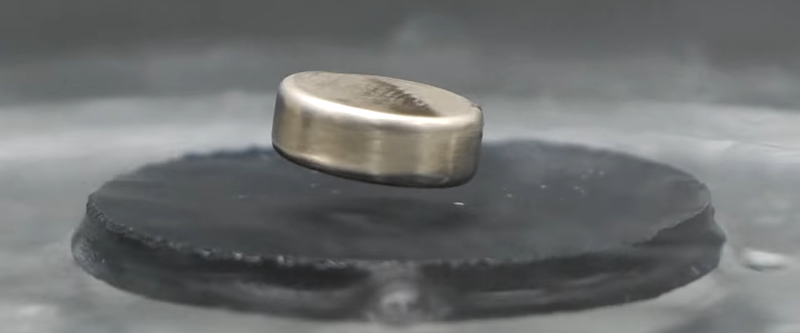We always enjoy [NileRed’s] videos. His latest shows how he made some relatively high-temperature superconducting ceramic. After finding what appeared to be some really good instructions on the Internet, [NileRed] found there were some things in the paper that didn’t make sense. You can watch the video, below.
The superconductor was YBCO, sometimes known as 123 because of the ratio of its components. Turns out that most of the materials were available online, except for one exotic chemical that he had to buy from a more conventional source.
The purity of some of the chemicals was in doubt, so he purified some of it and did find some contaminants in it. If you want to do this yourself, you are going to need some chemical handling gear and we’d suggest reading the safety sheets on all the material involved.
If you don’t have the tools, you are going to have to arrange for vacuum chambers, an 8-ton press, furnaces, and more mundane things like stirring hot plates and lab glassware. You might even need a blender.
Of course, you also need to handle liquid nitrogen to cool things off enough to see the superconducting effect. [NileRed] actually had to buy a furnace for this effort–spending about $2,000– and had a bit of a challenge getting it in one piece, as you’ll see, along with hitting it with twice the rated voltage.
Even though we might not have had to repair the furnace, we doubt we are going to make any superconductors anytime soon. But it is reassuring to know that it is in the realm of what you could do in your garage if you wanted to.
We’ve talked about some of the projects that [NileRed] found for inspiration. While we were impressed with the process, we aren’t sure this material is up to making a practical hoverboard.
















Wow! Unlike Dexter’s lab, this is educational, informative and inspiring.
Typo in 2nd paragraph above. It’s YBCO (yttrium barium copper oxide), not YCBO. Also, it helps to write out abbreviations the first time they’re used in an article.
His formula is what I’ve read elsewhere, re-firing it multiple times seems to be key as he discovered:
https://www.greenoptimistic.com/make-superconductor-home/#.XMhmganLe8Q
Now if he wants to try some further cryo-engineering he might also be able to try this project ;-)
“Weak gravitation shielding properties of composite bulk Y Ba2Cu3O7−x superconductor below 70 K under e.m. field”
https://arxiv.org/pdf/cond-mat/9701074.pdf
the “below 70K” might be a significant challenge for a semi-proffessional like him…LN boils at 77K and playing with liquid helium is not cheap by any means.
By adding salt to water you can drop its temperature under freezing by IIRC 10C. I wonder if something like that works for LN too.
Absolutely fantastic chemistry! Also nice recovery on the furnace. I truly enjoyed your video. :-)
I have some Y2O3 here! What about BSCCO, that ought to be simpler.
Yes, BSCCO is simpler.
Interesting aside: I sold some of my Y2O3 to a fellow student of physics.
Last I heard she got her PhD two years back.